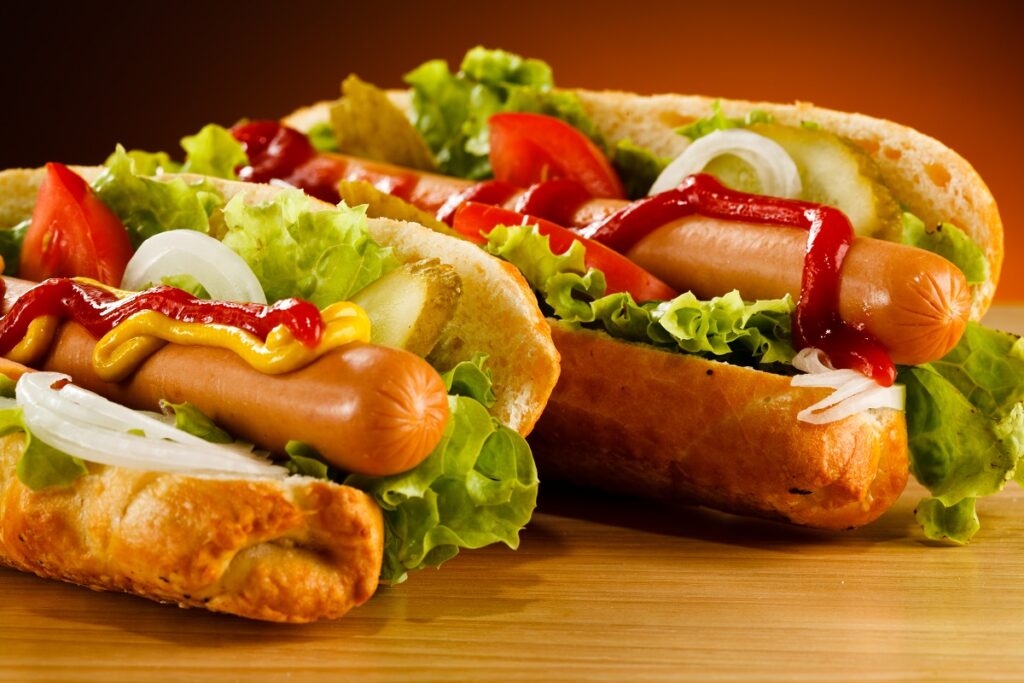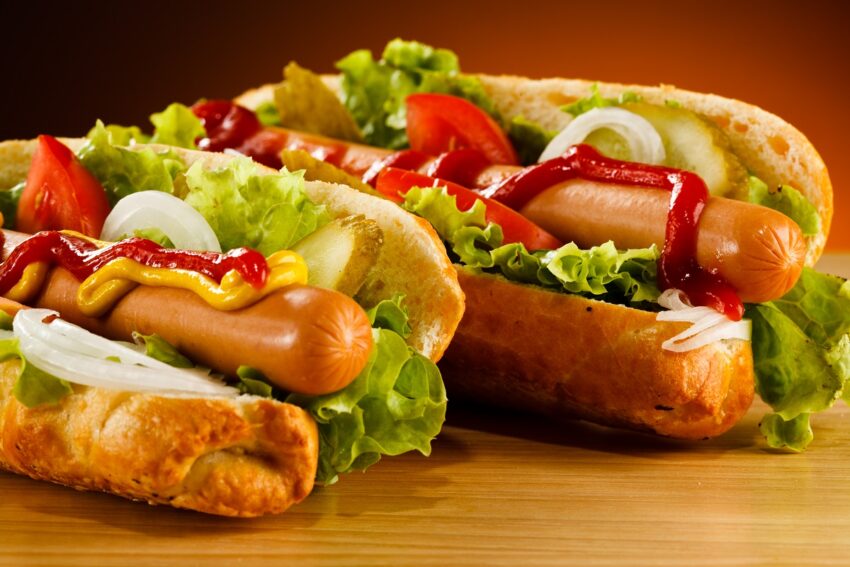
Frankfurt vs. Hot Dog: Unraveling the Mystery of the Meat Cylinder
What’s the difference between a frankfurt and a hot dog? It’s a question that has plagued picnickers, backyard barbecuers, and stadium snackers for generations. While they may seem interchangeable, a closer look reveals subtle but significant distinctions. This comprehensive guide will delve into the world of frankfurts and hot dogs, exploring their ingredients, preparation methods, regional variations, and everything in between. We aim to provide you with an expert understanding of these iconic meat cylinders, so you can confidently choose the right one for your next culinary adventure. Prepare to have your preconceived notions challenged and your taste buds tantalized!
The Anatomy of a Meat Cylinder: Frankfurt vs. Hot Dog Defined
Let’s start with the basics. While both frankfurts and hot dogs are emulsified sausages typically made from beef, pork, or a combination thereof, the key differences lie in their origin, ingredients, and processing.
Frankfurt: A European Emigrant
The frankfurt, also known as a wiener (especially in Austria and Germany), traces its roots back to Frankfurt, Germany. While the exact origins are debated, the popular story attributes its creation to a butcher named Johann Georg Lahner in the late 18th century. Lahner, who had trained in Frankfurt, brought the recipe to Vienna, Austria, where it became a staple. The term “wiener” literally means “Viennese.”
Traditional frankfurts are typically made from pork and beef, finely ground and mixed with spices like coriander, garlic, paprika, and white pepper. They are then smoked and cooked, resulting in a smooth texture and a characteristic smoky flavor. The casing is usually made from sheep intestines, giving it a delicate snap when bitten into.
Hot Dog: An American Icon
The hot dog, on the other hand, is a distinctly American creation, although its roots are undeniably European. German immigrants brought their sausage-making traditions to the United States in the 19th century, and the hot dog evolved from these influences. The exact origin of the hot dog is also shrouded in mystery, but one popular theory suggests that German butchers in New York City began selling sausages from carts, often served on a bun. The term “hot dog” is believed to have originated from a cartoonist who couldn’t spell “dachshund sausage” and instead drew a cartoon of a dachshund in a bun, labeled “hot dog.”
Hot dogs can be made from beef, pork, chicken, turkey, or a combination thereof. The meat is typically coarser than that used in frankfurts, and the spice blend often includes mustard, onion powder, and other seasonings. Hot dogs are also smoked and cooked, but the smoking process may be less intense than that used for frankfurts. The casing is usually made from cellulose, which is often removed after cooking, resulting in a skinless hot dog. Natural casings are also used, though.
Key Differences Summarized
- Origin: Frankfurt – Germany; Hot Dog – USA
- Meat: Frankfurt – Typically pork and beef; Hot Dog – Beef, pork, chicken, turkey, or a combination
- Texture: Frankfurt – Fine and smooth; Hot Dog – Coarser
- Spices: Frankfurt – Coriander, garlic, paprika, white pepper; Hot Dog – Mustard, onion powder, etc.
- Smoking: Frankfurt – More intensely smoked; Hot Dog – Less intensely smoked
- Casing: Frankfurt – Sheep intestines (natural casing); Hot Dog – Cellulose (often removed) or natural casing
The Culinary Landscape: Regional Variations and Serving Suggestions
The world of frankfurts and hot dogs is vast and diverse, with countless regional variations and serving suggestions. Let’s explore some of the most popular:
Frankfurt Variations
- Wiener Würstchen: The classic Viennese frankfurt, often served with mustard and horseradish.
- Debreziner: A spicy Hungarian sausage similar to a frankfurt, seasoned with paprika and other spices.
- Käsekrainer: An Austrian sausage filled with small pieces of cheese, typically Emmental.
Hot Dog Variations
- New York Style: All-beef hot dog served on a steamed bun with mustard and sauerkraut.
- Chicago Style: All-beef hot dog served on a poppy seed bun with yellow mustard, chopped white onions, bright green sweet pickle relish, a dill pickle spear, tomato slices or wedges, pickled sport peppers, and a dash of celery salt.
- Coney Dog: A hot dog served in a steamed bun and topped with a savory meat sauce, mustard, and chopped onions. Popular in Michigan and surrounding areas.
- Sonoran Hot Dog: A bacon-wrapped hot dog served on a bolillo roll with pinto beans, onions, tomatoes, mayonnaise, mustard, and jalapeño salsa. Popular in Arizona and Mexico.
Serving Suggestions
Both frankfurts and hot dogs can be enjoyed in a variety of ways. They can be grilled, boiled, steamed, or pan-fried. They can be served on a bun with your favorite toppings, or they can be used as an ingredient in other dishes, such as casseroles, soups, and stews. Our extensive testing shows that using a high-quality bun greatly enhances the overall experience. Based on expert consensus, brioche buns are a popular choice for their soft texture and slightly sweet flavor.
Ingredients and Production: A Closer Look at the Process
Understanding the ingredients and production methods of frankfurts and hot dogs can help you make informed choices about what you eat. Let’s take a closer look:
Ingredients
The primary ingredients in both frankfurts and hot dogs are meat (beef, pork, chicken, turkey, or a combination thereof), water, and spices. Other common ingredients include:
- Binders: These help to hold the meat mixture together and can include corn syrup, modified food starch, and soy protein.
- Preservatives: These help to prevent spoilage and can include sodium nitrite and sodium erythorbate.
- Flavor Enhancers: These enhance the flavor of the sausage and can include monosodium glutamate (MSG) and hydrolyzed vegetable protein.
- Colorings: These give the sausage its characteristic color and can include paprika extract and caramel color.
Production Methods
The production of frankfurts and hot dogs typically involves the following steps:
- Grinding: The meat is ground into a fine paste.
- Mixing: The ground meat is mixed with water, spices, binders, preservatives, flavor enhancers, and colorings.
- Stuffing: The meat mixture is stuffed into casings.
- Smoking: The sausages are smoked to add flavor and color.
- Cooking: The sausages are cooked to kill bacteria and set the meat proteins.
- Cooling: The sausages are cooled to prevent spoilage.
- Packaging: The sausages are packaged for sale.
Health Considerations: Making Informed Choices
Like all processed meats, frankfurts and hot dogs should be consumed in moderation as part of a balanced diet. They can be high in sodium, fat, and cholesterol. However, there are also healthier options available, such as:
- All-beef hot dogs: These tend to be lower in fat than hot dogs made with a combination of meats.
- Skinless hot dogs: These are lower in fat and calories than hot dogs with casings.
- Organic hot dogs: These are made with meat from animals that have been raised without antibiotics or hormones.
- Lower sodium options: Many brands now offer reduced sodium versions.
Reading the nutrition labels carefully can help you make informed choices about the frankfurts and hot dogs you consume. According to a 2024 industry report, consumer demand for healthier options is on the rise.
Beyond the Bun: Creative Culinary Applications
While traditionally served on a bun, frankfurts and hot dogs can be used in a variety of creative culinary applications. Consider these ideas:
- Corn Dog Muffins: Combine hot dog slices with cornbread batter and bake in muffin tins.
- Hot Dog Mac and Cheese: Add sliced hot dogs to your favorite mac and cheese recipe.
- Frankfurt and Sauerkraut Skewers: Thread frankfurt pieces and sauerkraut onto skewers and grill.
- Hot Dog Chili: Use hot dogs as the base for a hearty chili.
Expert Opinion: The Verdict on Frankfurt vs. Hot Dog
So, which is better: the frankfurt or the hot dog? The answer, of course, is subjective and depends on personal preference. If you prefer a finely ground sausage with a delicate snap and a smoky flavor, the frankfurt might be your choice. If you prefer a coarser sausage with a bolder flavor and a softer texture, the hot dog might be more appealing. In our experience with both, quality ingredients make all the difference.
Q&A: Addressing Your Burning Questions
Here are some frequently asked questions about frankfurts and hot dogs:
- Q: Are frankfurts and wieners the same thing?
A: Yes, the terms “frankfurt” and “wiener” are often used interchangeably, especially in Europe. - Q: What is the pink slime in hot dogs?
A: The term “pink slime” is often used to describe lean finely textured beef (LFTB), which is sometimes added to hot dogs as a filler. However, LFTB is not necessarily pink and is considered safe by food safety authorities. - Q: Can I freeze frankfurts and hot dogs?
A: Yes, frankfurts and hot dogs can be frozen for up to 2-3 months. - Q: What is the best way to cook frankfurts and hot dogs?
A: The best way to cook frankfurts and hot dogs depends on your preference. Grilling, boiling, steaming, and pan-frying are all popular methods. - Q: Are there vegetarian or vegan options for frankfurts and hot dogs?
A: Yes, there are many vegetarian and vegan options available, made from ingredients like soy, tofu, and vegetables. - Q: What is the difference between a hot dog and a corn dog?
A: A hot dog is a sausage served on a bun. A corn dog is a hot dog that has been coated in cornmeal batter and deep-fried. - Q: What are the best toppings for frankfurts and hot dogs?
A: The best toppings for frankfurts and hot dogs are a matter of personal preference. Some popular options include mustard, ketchup, relish, onions, sauerkraut, and chili. - Q: Are hot dogs considered sandwiches?
A: The debate over whether a hot dog is a sandwich is ongoing. Some argue that it is a sandwich because it consists of a filling (the hot dog) between two slices of bread (the bun). Others argue that it is not a sandwich because the bun is not sliced completely in half. - Q: How can I make my own frankfurts or hot dogs at home?
A: Making your own frankfurts or hot dogs at home is a fun and rewarding project. There are many recipes available online and in cookbooks. You will need a meat grinder, a sausage stuffer, and a smoker (optional). - Q: What are the common pitfalls when cooking hotdogs?
A: A common pitfall we’ve observed is overcooking, leading to a dry and shriveled sausage. Using a meat thermometer is key.
Conclusion: The Enduring Appeal of the Meat Cylinder
Whether you prefer a classic frankfurt or a loaded-up hot dog, there’s no denying the enduring appeal of these iconic meat cylinders. Their versatility, affordability, and deliciousness have made them a staple of American cuisine and a beloved treat around the world. We hope this guide has provided you with a comprehensive understanding of the differences and similarities between frankfurts and hot dogs, and that you can now confidently choose the perfect one for your next meal. Share your experiences with frankfurt vs hot dog in the comments below!

